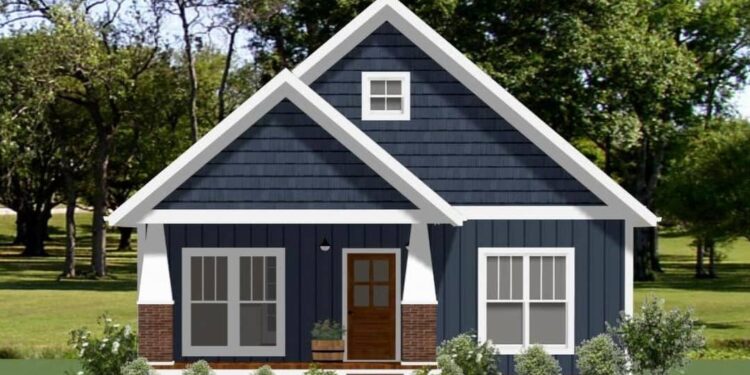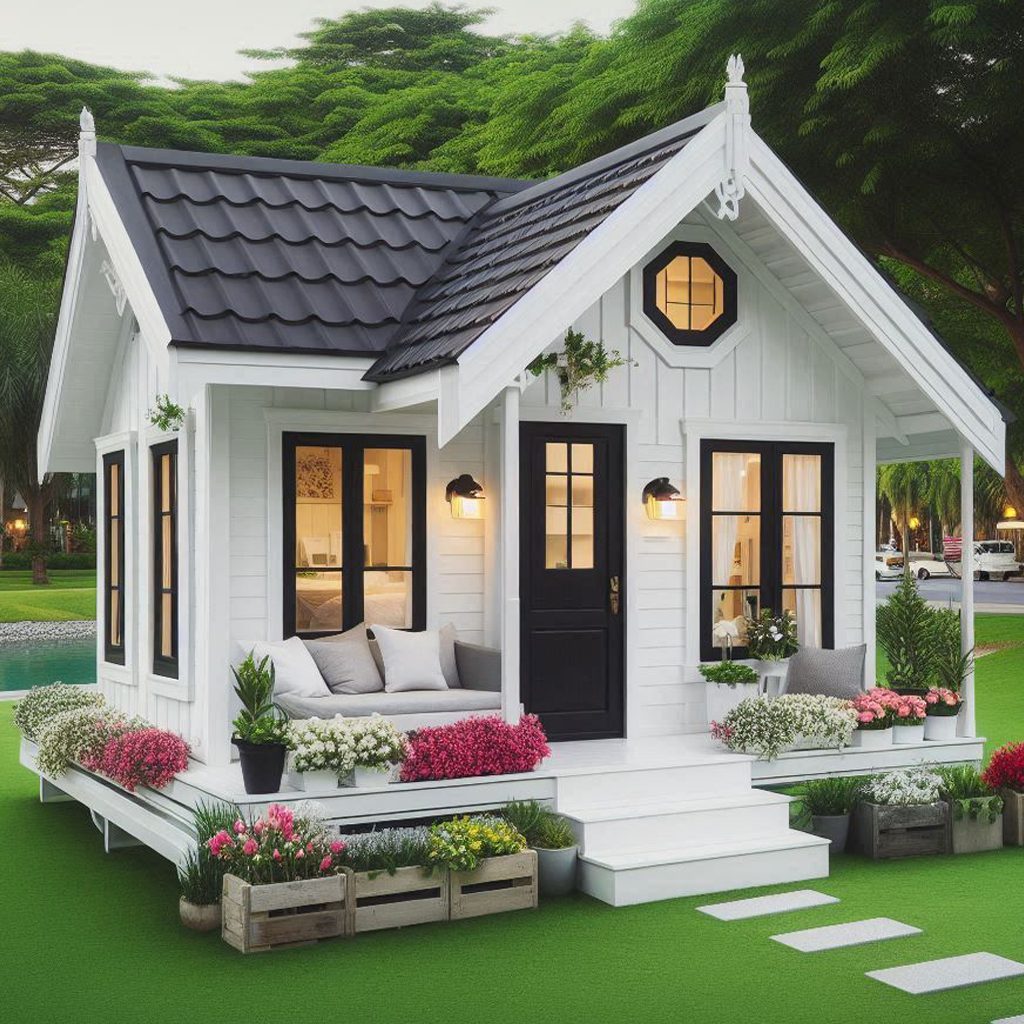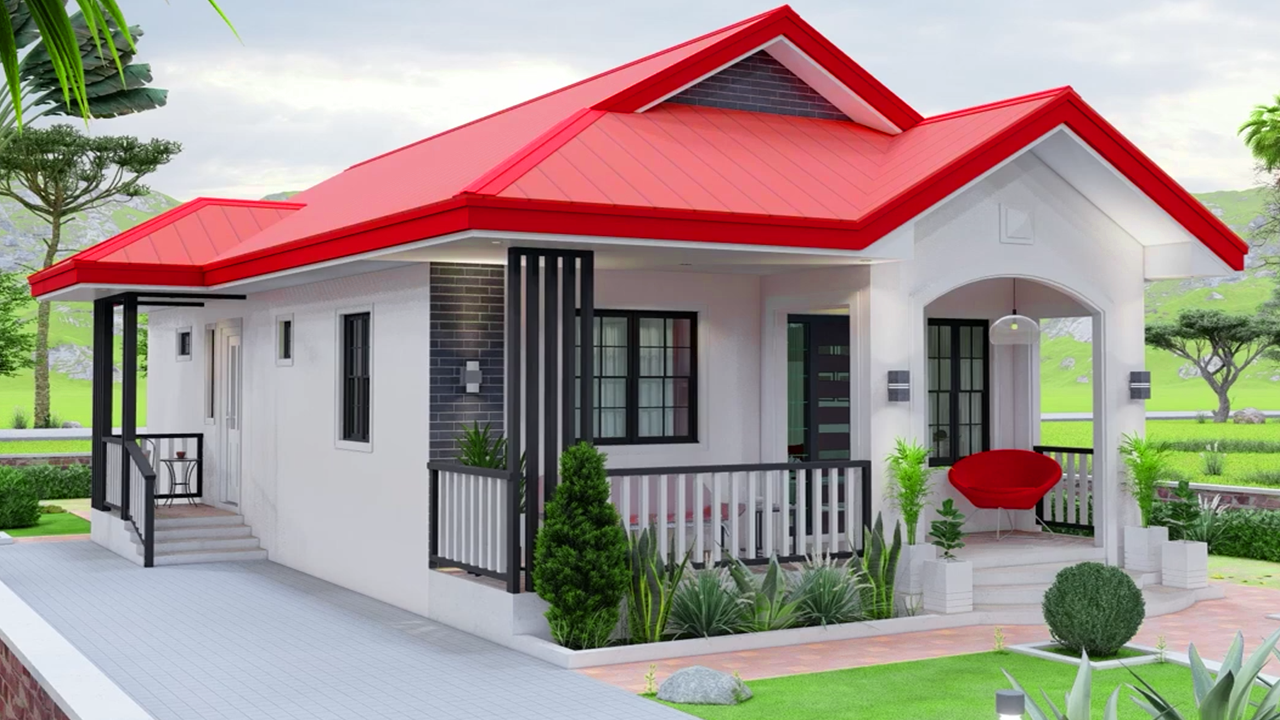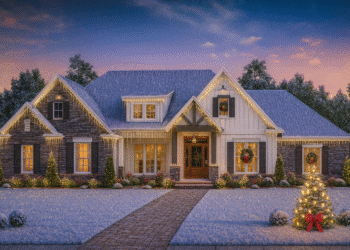This attractive two-bedroom cottage plan blends classic charm with modern livability. Though full plan details are unavailable due to site access restrictions, we can infer its strengths: intimate scale, efficient layout, and design flexibility.
Floor Plan:
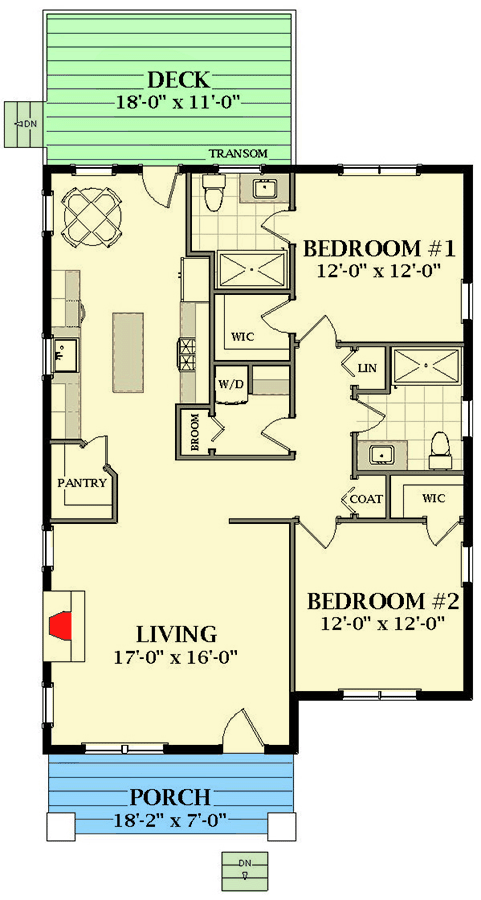
Exterior Design
The exterior likely balances cottage warmth with clean lines—gable roofs, modest overhangs, and trim accents around windows and eaves. A covered front porch may welcome guests, while rear access (if present) might connect indoor spaces to a patio or yard. The façade materials could include horizontal lap siding, board-and-batten, or a combination to highlight architectural elements.
Rooflines probably include a primary gable with secondary features (dormers or shed roofs) to break up massing. Window placement is expected to bring natural light into living zones while preserving privacy in bedrooms.
Interior Layout & Flow
The layout would focus on efficient circulation, minimizing wasted hallways. A central living/dining/kitchen zone is likely, flanked by bedrooms on either side—or perhaps grouped—depending on lot orientation. Utility and wet zones (kitchen, baths) would be clustered to reduce plumbing runs.
Given its “exclusive” designation, special touches such as built-ins, a cozy fireplace, or vaulted ceilings might elevate the standard cottage form. Transitions to outdoor space (porch, patio, deck) would be integrated for indoor-outdoor living synergy.
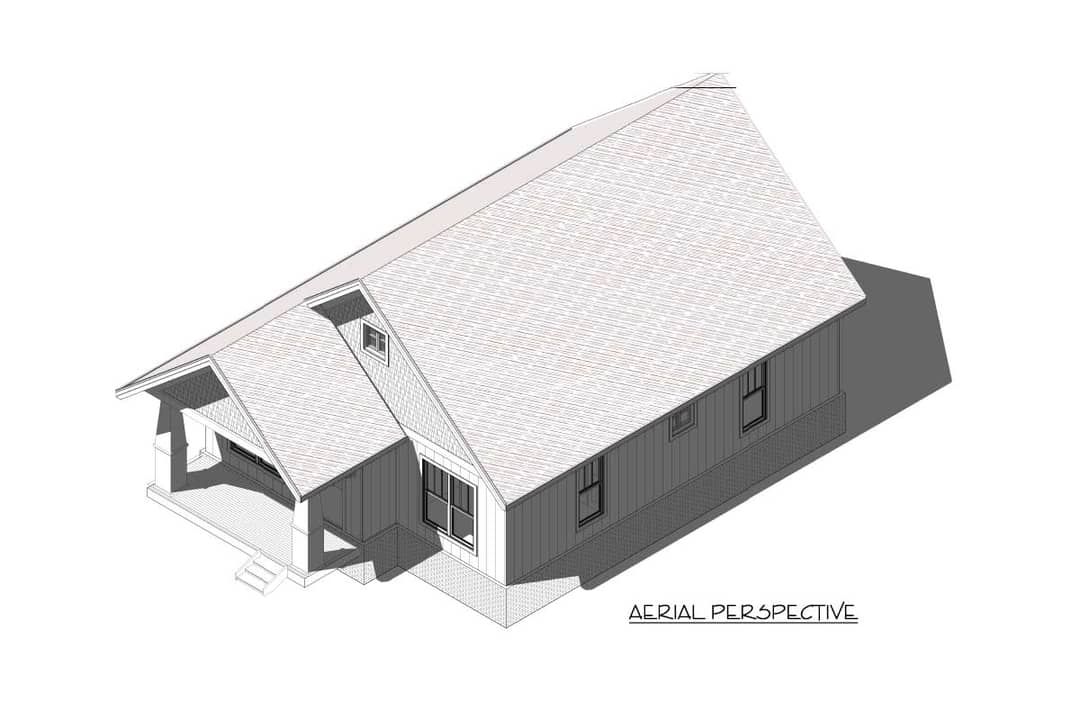
Bedrooms & Bathrooms
With two bedrooms, each would be proportioned for comfort, natural light, and sufficient closet space. The master suite might include a private bath and modest walk-in closet. The second bedroom would share access to a full (or three-quarter) bath.
Bathroom layouts would be designed to avoid long corridors—bathrooms may back onto each other or share plumbing walls. Efficient fixture layouts (tubs, showers, vanities) would complement the cottage scale.
Living & Dining Spaces
The main living zone is expected to be open and inviting, with a fireplace or accent wall as a focal element. Ceiling heights might elevate this space; vaulted or tray ceilings are possible options to enhance volume.
Dining is likely adjacent to the kitchen and may open to an outdoor transition zone—rear doors or sliding glass could connect to porches or patios. This adjacency ensures practicality and social flow.
Kitchen Features
The kitchen would support real function within a modest footprint—efficient counters, thoughtful cabinetry, and modern appliances (stove, refrigerator, sink). An island or peninsula with seating might be included for informal dining or prep support.
Work zones (prep, cooking, cleanup) would be arranged to maintain a tight triangle, with sightlines into living and dining areas so the cook remains engaged during social moments.
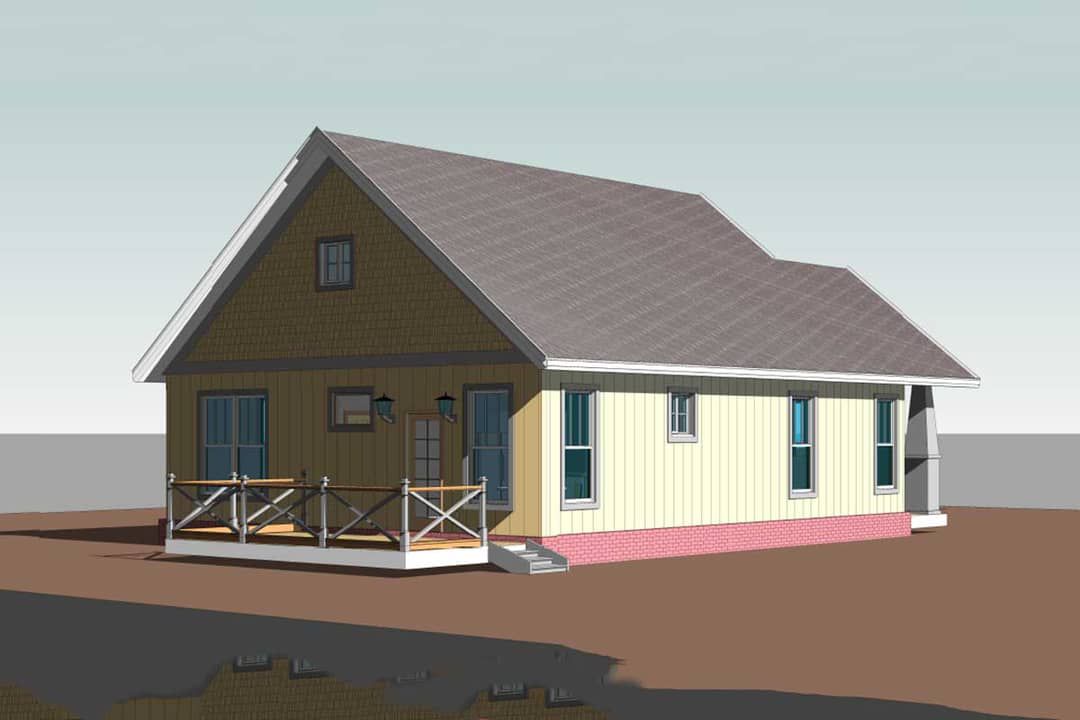
Outdoor Living (Porch / Patio)
A covered front porch is a hallmark in cottage designs, providing shelter and curb presence. It might span much of the front façade, allowing outdoor seating and greeting zones.
A rear door (from dining or living area) may lead to a small deck or patio, expanding living space outdoors. Given the plan’s scale, these outdoor areas provide valuable breathing room without demanding large yards.
Storage & Utility
Closets in both bedrooms, a linen closet, and kitchen cabinetry provide essential storage. The owner entry or laundry may incorporate additional utility cabinetry or organization systems.
Because wet zones are clustered, mechanical, plumbing, and electrical paths remain compact—lowering construction cost and simplifying maintenance.
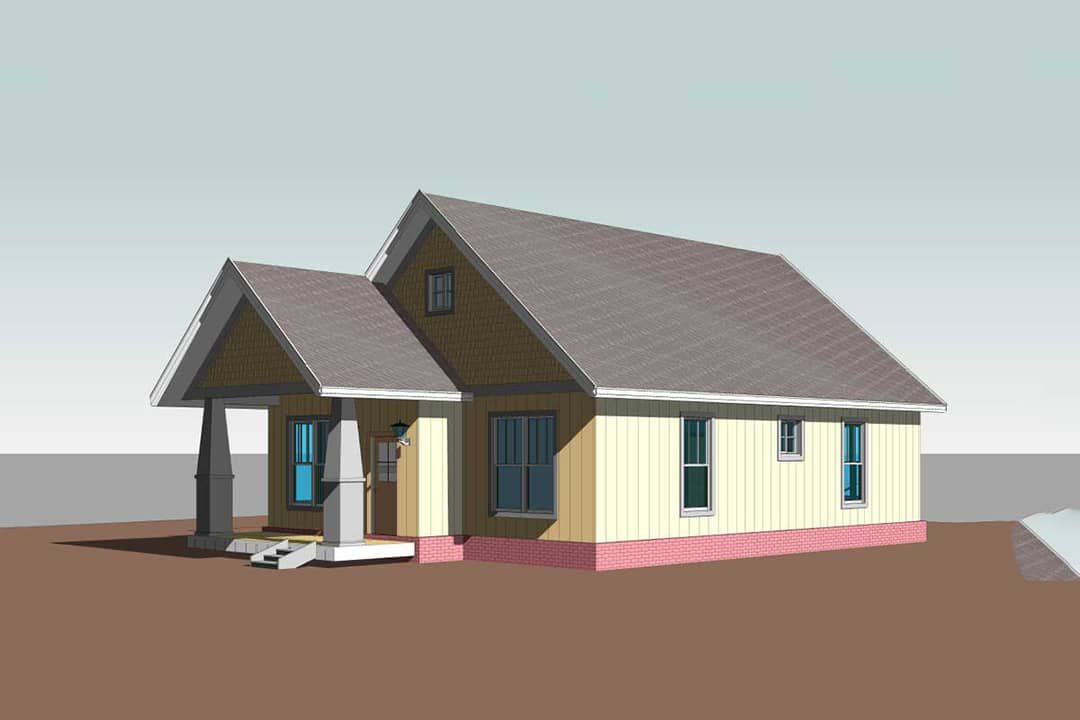
Construction & Efficiency Notes
Exterior walls likely default to 2×4 framing, though 2×6 may be optional to improve insulation. Roofing is straightforward gable geometry to keep structural cost moderate. Ceiling heights likely vary, with the living zone perhaps elevated for effect.
The efficient footprint reduces sidewall losses, and clustering of utilities reduces waste. Roof overhangs, window placement, and shading detail can help moderate solar gain and cooling costs. Small homes often benefit disproportionately from good insulation and tight building envelope control.
Estimated Building Cost
The estimated cost to build this home in the United States likely ranges between $220,000 – $380,000, depending on region, finishes, site complexity, and labor conditions.
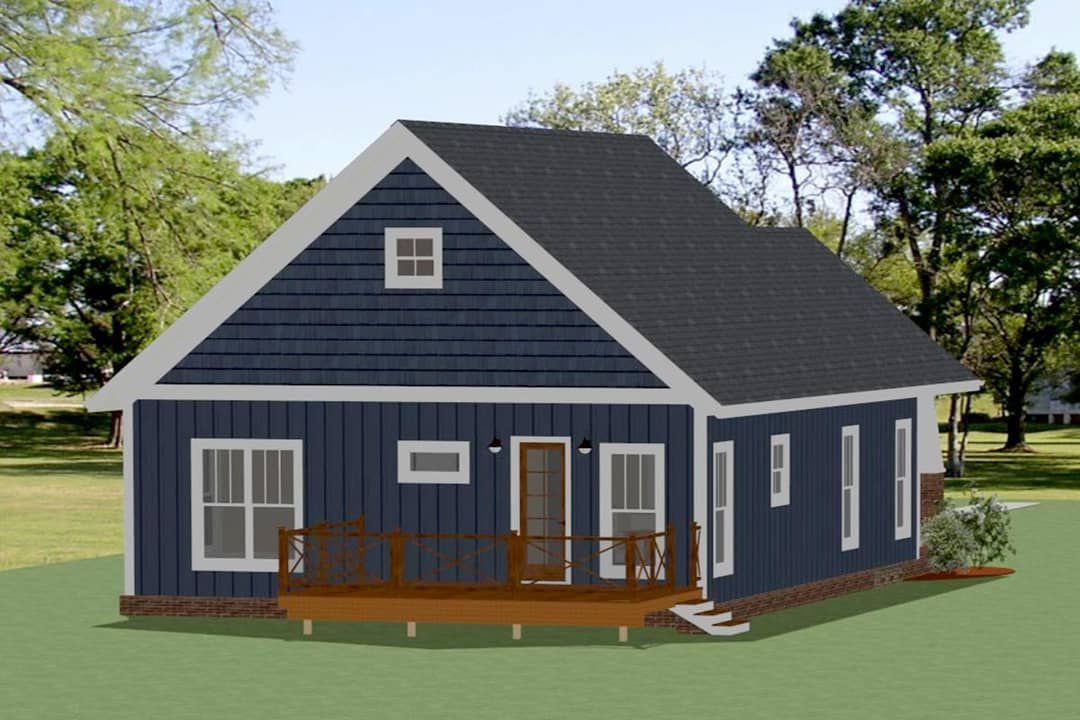
Why This Cottage Plan Deserves a Look
Small doesn’t have to be modest—this two-bedroom cottage balances charm, functionality, and efficient design. With smart layout, possible vaulted or elevated living space, and integration of outdoor areas, it offers the kind of comfortable living worth building. For buyers wanting an exclusive feel without excess square footage, this plan is a compelling option.
